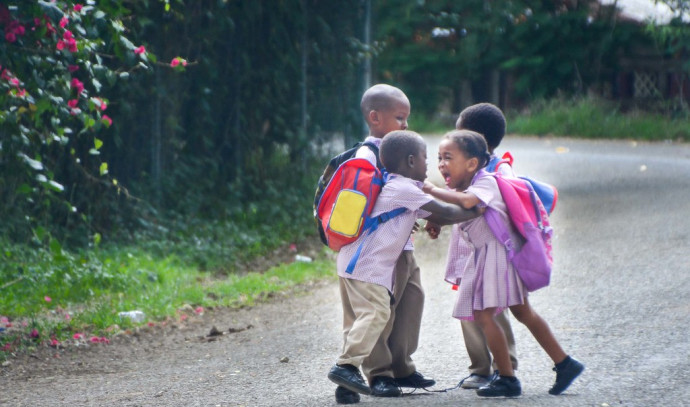Adults tend to develop biases that they hold dearly and do not easily abandon them even when the facts prove otherwise. But can children be saved from developing prejudices?
How do Israeli youngsters who are part of the majority feel about Arabs, former immigrants from Russia or Ethiopia or ultra-Orthodox and how do the religiously observant regard secular Jews? There have been violent clashes and even murders between competing groups.
Children’s views of inequality may be influenced by how its causes are explained to them, according to a new study by a team of psychologists at New York University (NYU). The work offers insights into the factors that affect how larger social issues are perceived at a young age and points to new ways to reduce bias toward lower-status economic groups.
“When making sense of social inequalities, adults may consider the structural forces at play. For example, they may cite policies related to legacy admissions – a preference given by an institution or organization to certain applicants on the basis of their familial relationship to alumni of that institution – when thinking about how disparities first arise,” said NYU doctoral student Rachel Leshin and the lead author of the study. It has just been published in the journal Proceedings of the National Academy of Sciences (PNAS) under the title “Structural explanations for inequality reduce children’s biases and promote rectification only if they implicate the high-status group.”
How children interpret status differences
Children, she continued, “don’t necessarily see differences in status in this way, and when they’re prompted to consider the structural forces, they tend to interpret these structures differently from how adults do. However, our work shows that children can think about these matters in a similar manner as adults do if the structures driving inequality are explained to them in specific ways. Such approaches, we found, also reduced the extent of bias children felt against a lower-income group relative to a higher-income group.”
It has been found long ago that children become aware of inequality from a young age and quickly develop status-related biases as a result. For example, they often view more positively those from high-status groups – those with more material resources or belong to groups that they believe are wealthy – and they willingly accept group disparities.
In the new study, Leshin and NYU psychology Prof. Marjorie Rhodes examined how children reason about economic inequality to understand how the explanations provided for an inequality shaped children’s responses to it, such as how they feel about a low-status group or whether they want to rectify the inequality. They aimed at understanding how these explanations could be used to reduce biased views against lower-status groups.
The Toogits and Flurps
They recruited over 200 children aged five to 10 to participate in an online study. In the study, children learned about two fictional groups – one named “Toogits” (a high-status group) and the second “Flurps” (a low-status group). Fictional groups are often used to test children’s attitudes and reduce bias linked to “real-world” social categories. These groups were described as differing in wealth and resources, such as:
See this Flurp? This Flurp lives in this house. And you know what else? Grown-up Flurps have jobs that only pay them a little money. Because Flurps don’t have that much money, this Flurp only got a pair of socks for his/her birthday, and he/she didn’t get to have a birthday party at all.
The children were also shown images that represented where the two groups lived, with the Toogit shown in a nice, polished house and the Flurp shown in a less attractive house.
To understand the causes provided for explaining how inequality shaped children’s responses to it, the researchers gave children one of three explanations for the inequality shown through the two fictional groups: one attributed it to structural causes and cited the high-status group as the structures’ creators (for example, “because of rules that [the high-status group] made up a long time ago”); another attributed it to structural causes but did not identify their creator (“because of rules that were made up a long time ago”); and one, the control condition, didn’t provide an explanation at all (“it’s been like that for a long time”).
The team wanted to know whether and to what extent these explanations would shape children’s responses to inequality, including their level of bias against the low-status economic group.
The results showed that only the structural explanation that identified the high-status group as the catalyst responsible for the different circumstances of the two groups produced notable effects. Children in this condition reported lower levels of bias toward these fictional groups, perceived the status hierarchy as less fair, and opted to give more resources to the low-status group relative to those in the other two conditions.
By contrast, children who heard a structural explanation that did not present the high-status group as a cause for these differences (instead citing a third-party (“the person who got to make the rules”) responded no differently than did those in the control condition who heard no explanation at all.
“In engaging with children about inequality, whether it’s linked to wealth or educational attainment, one must not only identify a structural cause underlying a disparity, such as legacy admissions, but to also identify the group influential in the implementation of those structures,” explained Leshin. “We think these findings can be used to better understand how we can meaningfully engage with children about inequality.”



